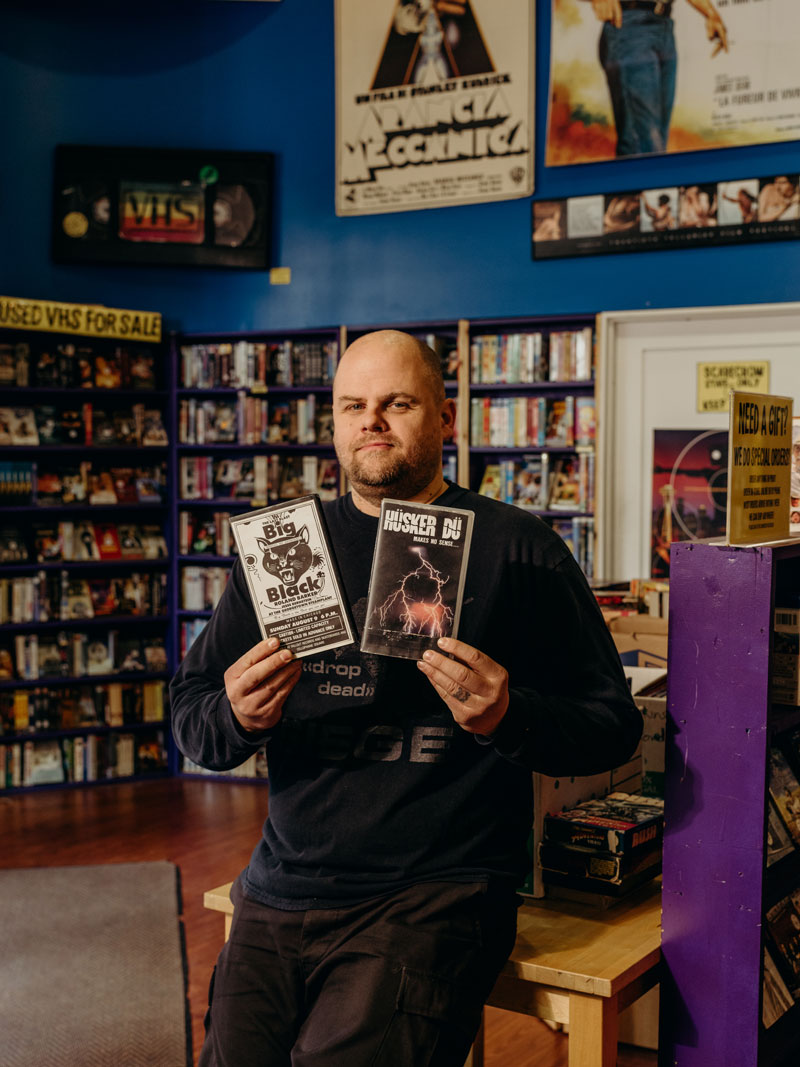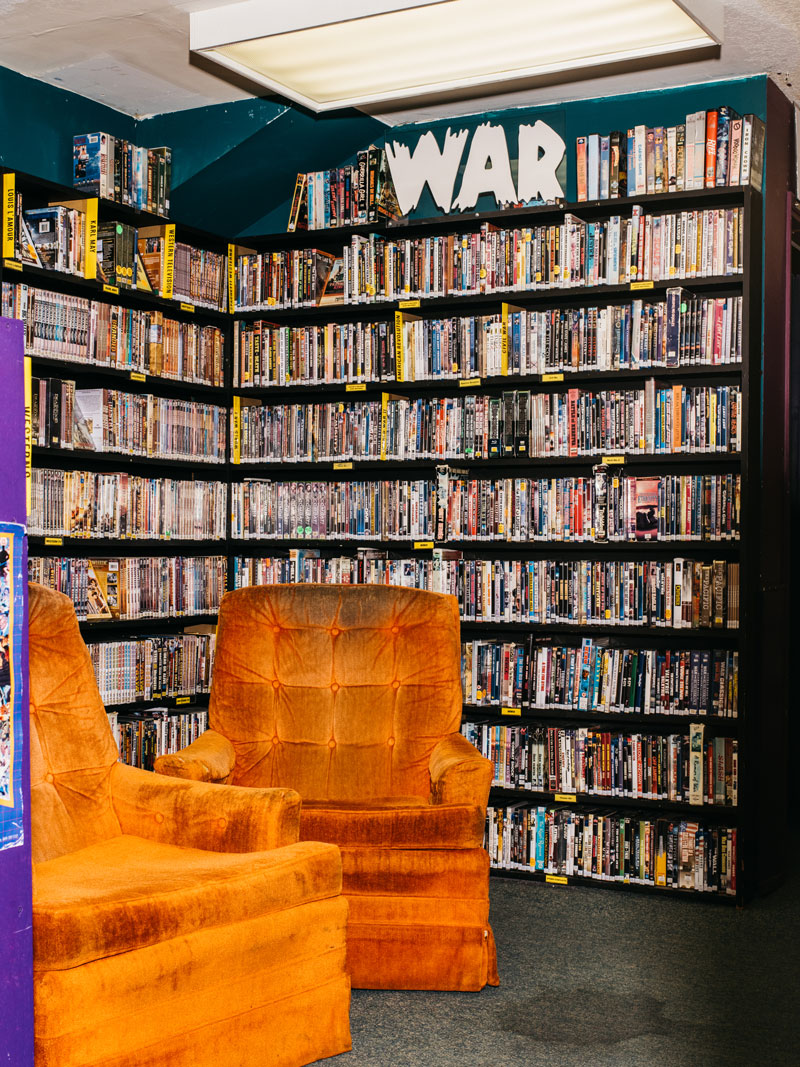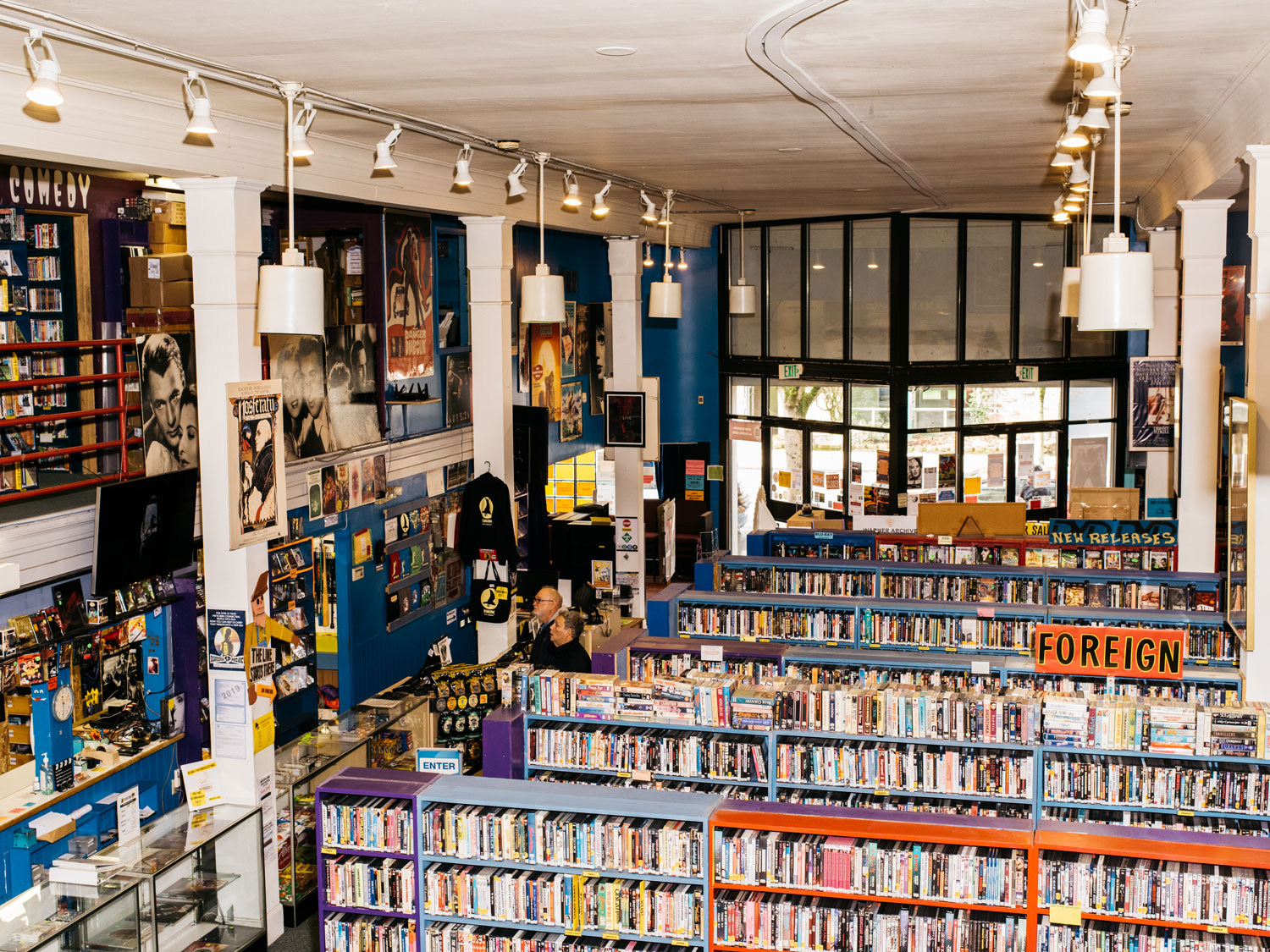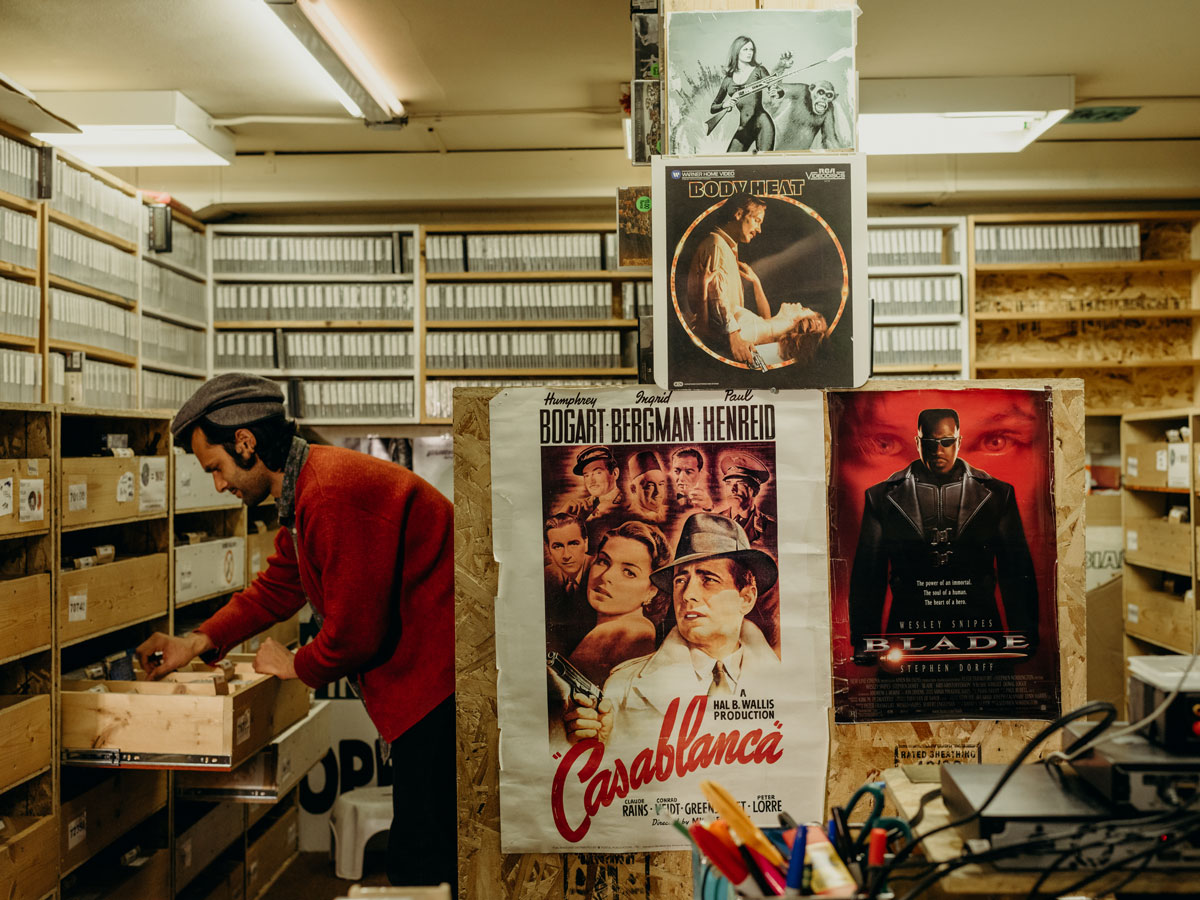Last straw for Scarecrow? Last straw for Scarecrow? Last straw for Scarecrow?
Seattle might say goodbye to Scarecrow Video, a beloved institution in the U District, if they don't raise much-needed funds by the end of 2024.
By Shin Yu Pai | Photos by Kyle Johnson | September 2024

On my first visit to Scarecrow Video, I was transported back to the video rental stores of my childhood, which I visited with my father in Southern California. The grungy carpet, vintage movie posters and nooks and crannies holding the most obscure titles. It’s a buffet of delights wherever your curiosity and discovery lead. Back then, my dad had a thing for James Bond movies, which incidentally have their own dedicated section at Scarecrow.
Surrounded by unending shelves of VHS tapes and DVDs, I asked a clerk to point me toward Taiwanese film. “By country or director?” he asked. The name Hou Hsiao-Hsien rolled effortlessly off his tongue as he gestured toward the directors’ section.
My friend Kyle disappeared into the music section and emerged with “Salad of a Thousand Delights,” a DVD of a 1991 Melvins concert filmed in Olympia. Scarecrow rents most videos for a fee of $4.50, which is cheaper than some rotating releases on Amazon Prime or Apple TV. The store also loans equipment for media formats including Blu-ray, DVD, VHS and LaserDisc. A U District institution for more than 30 years, the store, now a nonprofit, hopes to raise $1.8 million by the end of 2024 or face closure. The organization has launched a Save Our Scarecrow (SOS) campaign to address the shortfall. Shuttering the store would mean a significant loss to the local and academic community. The collection, which includes nearly 150,000 titles, is likely the world’s largest film and television archive open to the public.
Founded in 1988, Scarecrow Video has nurtured the interests and imaginations of countless film lovers and UW alumni. Scarecrow’s board president, Lacey Leavitt Gray, ‘03, majored in film studies and pursued filmmaking in New York and Los Angeles. She assumed both cities would have better video stores. “I was shocked to find that Kim’s in NYC was substantially smaller than Scarecrow, as was every video store I explored in L.A.,” says Gray. “I knew that Seattle had a lot of cinephiles and boasted a world-class festival. But I didn’t realize how lucky we were to also have Scarecrow as a world-class collection right here at our fingertips!”
The demise of Scarecrow would be an enormous blow, says Warren Etheredge, a lecturer in Cinema & Media Studies. “Netflix and Amazon want you to believe that we have greater, easier access to movie-image media than ever before,” he adds. “However, it becomes clearer daily that physical media represents the only reliable archive.” Scarecrow provides a safety net for all titles, protecting them from censorship and corporate greed, making it a rare resource for out-of-print movies.
George and Rebecca Latsios started the independent store with about 600 titles. The original space couldn’t hold the growing collection, so Scarecrow moved to 5030 Roosevelt Way N.E. in 1993.
While popular, the store had overspent on new videos and had to file for bankruptcy in 1998. It was rescued by some longtime customers who purchased the store and stewarded the business for 10 more years, expanding the collection to include DVD, Blu-ray and game rentals and publishing “The Scarecrow Video Guide.”
The collection, which includes nearly 150,000 titles, is likely the largest video archive in the world open to the public.
In 2015, Scarecrow Video became a nonprofit and the owners donated the entire catalog. Today, the organization is made up of 18 staff and a host of volunteers.
Recognized as a cultural museum since 2019, Scarecrow Video’s deep focus on physical materials provides a rich resource for library science master’s students.
Over the years, they have focused on metadata management, preservation and research into ownership and rights. Janey Thompson, ’17, for example, completed her capstone project on Scarecrow’s silent film collection.
After meeting with Scarecrow staff to learn about the scope of the catalog, UW student Cypress Payne decided to focus her research on foreign film VHS tapes from Africa. Payne grew up in Jos, Nigeria, and loved the idea of getting to work with films from a place she once called home.
She conducted an audit of the entire VHS tape collection and made recommendations for rare titles that were too precious to be included in Scarecrow’s Rental by Mail program. When movies are from foreign countries with less established movie industries, they can be difficult to replace if lost. Some of the movies Payne researched aren’t available anywhere except Scarecrow.
“They have a copy of ‘The Magic Garden,’ which is the first film with an all-Black cast shown in white cinemas in racially segregated Johannesburg,” she says. She adds that Scarecrow also has a VCD (video compact disc) copy of “Crazy Safari,” which is an unofficial third film in “The Gods Must Be Crazy” franchise and was never released in the U.S.
Jessica Robbins, ’20, focused her capstone project on Scarecrow’s rarest items. Looking at the collections’ oldest videos, she tagged items for future preservation. Robbins recommended that about 180 titles be added to the Rental by Authorization list, and she identified nearly 90 more for digital preservation. She found them in more than 20 sections of the store, including comedy, drama, sci-fi, LGBTQ+ and anime.
“The vast majority of lending institutions have selection criteria that include quality or merit of a given work as an important factor in purchasing decisions,” she says. “They tend to skew heavily toward purchasing not only the same kinds of materials, but literally the same titles as one another.
“Scarecrow has amassed a truly spectacular collection of items driven not only by consideration of artistic merit, but also niche appeal, uniqueness and customer taste,” Robbins adds. “Consequently, the more time passes, the more value these items gain as research objects. I can’t think of any other institution that has the same potential value for future researchers who want to investigate not only the products of the television and film industries, but also the people who love film.”




